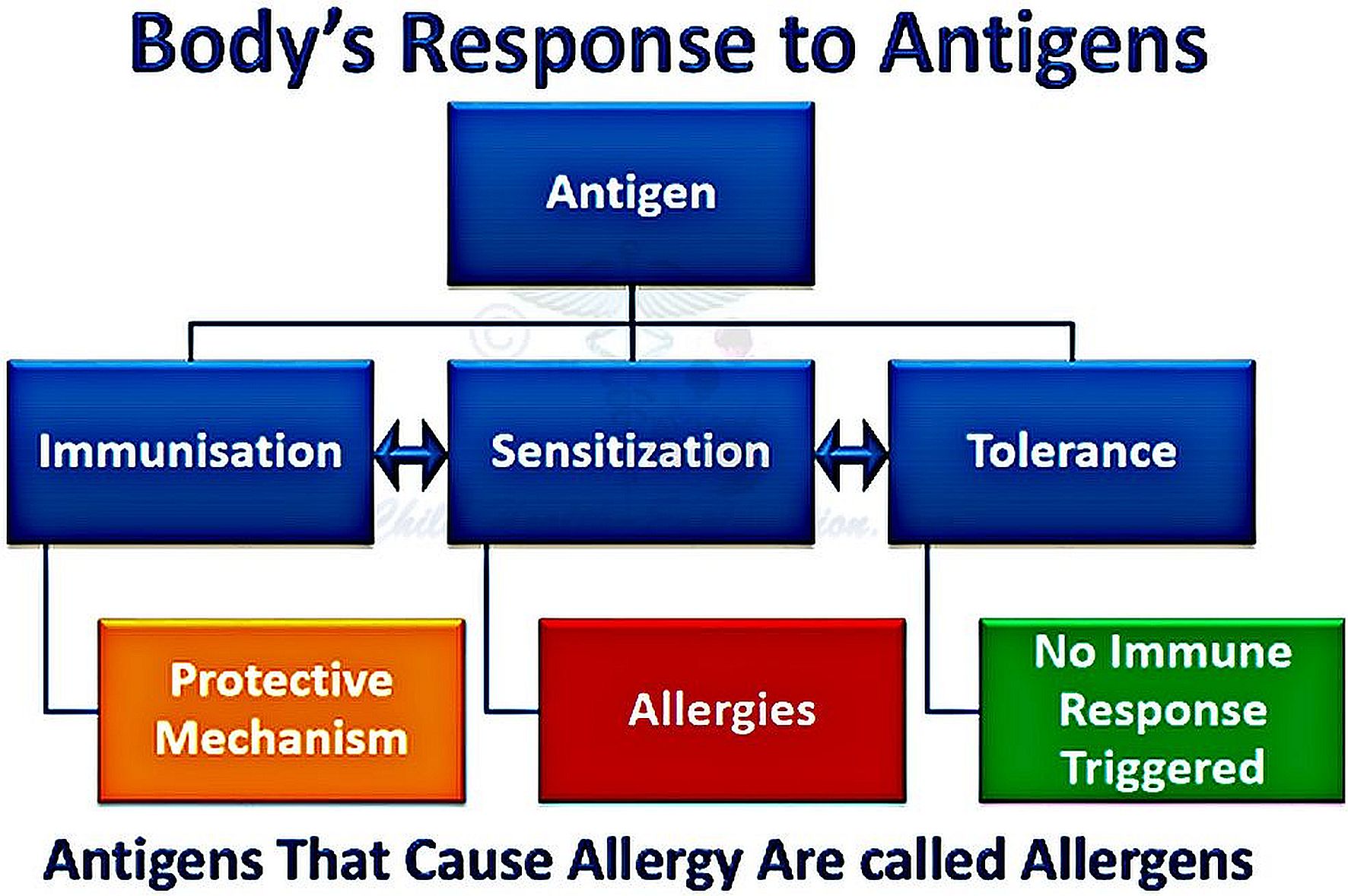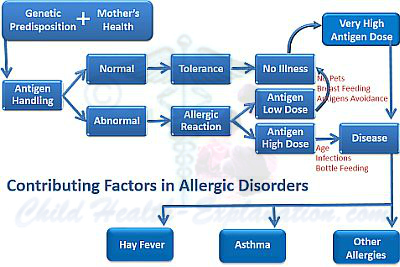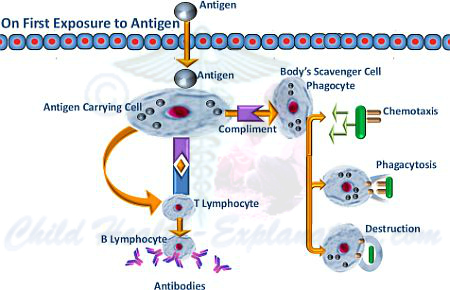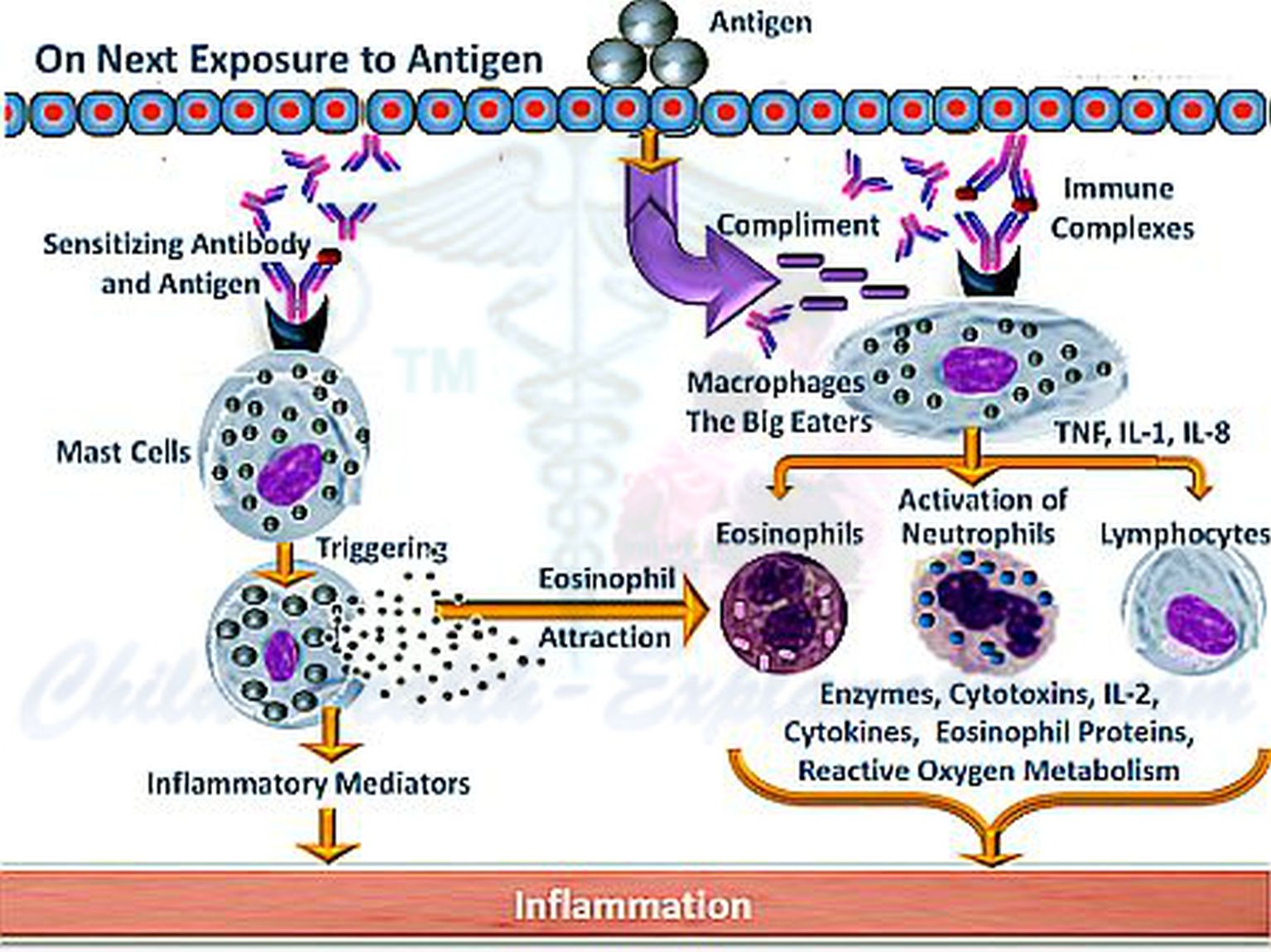Allergies in Children Cause Child Health Concern
Allergies in children are a major cause of child health concern. Besides genetics, rising stress in mothers and children is an important contributing factor. 50 percent of children suffer from one or other form of allergic reaction during their childhood.
Allergies present with wide variety of symptoms ranging for mild annoyance to grave life threats. Evolution of allergic reaction is triggered by exposure to allergens. Some allergic reactions are short lived, but many of them lead to chronic suffering that affects the quality of life of the affected.
Allergies influence several organ systems through a single mechanism of disturbed immune response.
The mechanism of allergic reaction
Understanding the mechanism of development of allergies is crucial. It helps parents and child care providers to detect the symptoms early enough for optimal treatment. It also helps to identiy and avoid the allergens.
What are allergens?
Antigens that cause allergy are called allergens. They are tiny substances and often microscopic; for example bacteria, molds, dust mites, toxins, pollen, animal dander, food proteins, ambient air pollution and so on.
Though we all are exposed to environmental allergens all the time, only a few get sensitized to some of the allergens. Consequently they experience unpleasant sensation and reactions, which are termed as allergic reactions.
Allergies can affect many organs at a time; for example asthma patients also suffer from allergic inflammation of the inner delicate membrane of the nose, and conjunctivitis (red-eye).
Contributing factors for allergies in children
1. Genetic suscepetibility
Why some people’s defense system over reacts to commonly existing antigens in the environment is explained by their genetic makeup.
Disturbed immune response, that have familial predisposition are classified as atopic disorders.
Common known allergic diseases that have genetic predisposition are asthma, rhinitis, rhinosinusitis, reactive middle ear inflammation - otitis media, sleep apnea, laryngo-pharyngitis, conjunctivitis, several form of skin eruptions and atopic dermatitis.
2. Stress predisposes to allergies
a) Maternal stress threatens immune system development in fetus:
Independent of genetic predisposition, functional programming of the fetal organs is influenced by intrauterine environment.
Maternal stress leads to high levels of intrauterine stress hormones of both, the baby and the mother. This disturbs the defense system development of the fetus; at a stage when it is being programmed.
Consequently, defence specifications imprinted to recognise allergens get distorted and the baby born is prone to various types of allergic diseases including autoimmune disorders
b) Stress in children:
Children of all ages experience stress in event of real or perceived difficulties: Daily experiences with parents, peers, siblings and significant others in their environment. Stressful situations could be sporadic or long lasting.
Brain senses the stress and induces adaptation, which is seen as behavior changes. Allostatic load, activation of neural, neuroendocrine and neuroendocrine-immune mechanisms in response to conscious and subconscious adaptation to stress, impairs immune response regulatory mechanism, and increases the chances of allergic disease.
3. Hygiene hypothesis
- Friendly gut flora
with their probiotic effect optimize immune regulatory mechanism of the body.
- Allergies in children are more common in affluent society who implement strict hygiene. Probiotics have been proved to be beneficial in treatment of allergic diseases.
4. Suboptimal exposure to sunlight
5. Vitamin D deficiency
Liked what you read just now? Pay it forward!
Evolution of allergic reaction
Immune reaction is a sequence of events involving interaction between many types of cells, antibodies and complement as shown below.
Diagnosis of allergic diseases
Many common diseases can mimic allergies in children, and vice versa. This often makes the diagnosis difficult. Parents and other well wishers try several over the counter medications and home remedies thereby delaying appropriate medical management.
Allergy test now can quite accurately ascertain the causative allergens, which then need to be avoided. Prevention of allergic episodes is the first and the best approach in treatment of allergies in children.
Does allergen avoidance really work?
Yes, avoidance really works.
If children with allergic predisposition are not exposed to substances that
annoy their defense system there will be no aggression; and remember that the
battle ground is our children’s body.
No exposure to offending allergens - No allergic reaction!!!
Note the illustrations for evolution of allergies in children.
Click Here to Post your Questions: It's Free
Related pages of interest
Coping with Allergies in Children
Prevention of Allergies in Children
Role of Vitamin D in Prevention of Allergies
Anaphylaxis in Children: Field Management
Summer Camp Safety Focus Food Allergic Children
Liked what you read just now? Pay it forward!


















New! Comments
Have your say about what you just read! Leave me a comment in the box below.